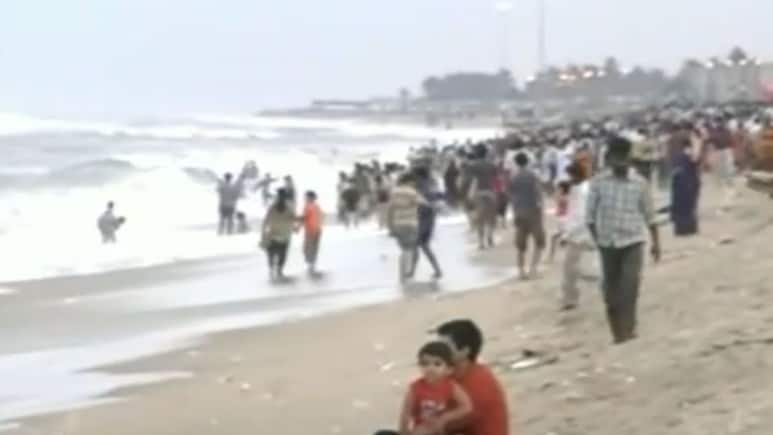
- A magnitude 8.8 earthquake near Kamchatka triggered tsunami warnings across the Pacific region
- Japan advised over 900,000 residents in 130 coastal towns to evacuate to higher ground
- Hawaii, California, Alaska, British Columbia, and Mexico issued tsunami watches or evacuation orders
A massive undersea earthquake near Russia's Kamchatka Peninsula triggered tsunami warnings across the Pacific, affecting regions from Japan to Hawaii and parts of the US West Coast. The magnitude 8.8 quake, located southeast of Petropavlovsk-Kamchatsky, generated waves up to four metres high along Russia's coastline.
In Japan, the quake set off large-scale evacuation advisories, with more than nine lakh residents in over 130 coastal towns urged to move to higher ground. While forecasts warned of tsunami waves up to three metres, the waves that reached Japan's shores, particularly in Hokkaido and Ishinomaki, were much smaller, generally around 30-40 cm.
Other countries across the Pacific also responded. Hawaii issued evacuation orders for parts of Oahu, and coastal regions in California, Alaska, British Columbia, and Mexico were placed under tsunami watches.
The event has revived memories of the unimaginable destruction caused by the Indian Ocean tsunami in 2004.
The 2004 Indian Ocean Tsunami
On the morning of December 26, 2004, a magnitude 9.1 undersea earthquake off the west coast of Sumatra, Indonesia, unleashed a tsunami that devastated the Indian Ocean region. Within hours, massive waves struck the coastlines of 14 countries, killing around 2.3 lakh people and displacing millions. Entire communities were swept away.
The Impact On India
India was among the hardest hit. The tsunami struck the eastern coast with devastating force, particularly affecting Tamil Nadu, Andhra Pradesh, Puducherry, and the Andaman and Nicobar Islands.
In Tamil Nadu, fishing towns in Nagapattinam, Kanniyakumari, and Cuddalore saw significant destruction and the highest number of casualties. Families lost loved ones, homes, and livelihoods in seconds, as the sea surged inland for several km.
In the Andaman and Nicobar Islands, the destruction was even more severe. Entire villages were submerged, and thousands were listed as missing. The region's remote geography made relief efforts extremely challenging, delaying access to essential aid.
Epicentre
The earthquake's epicentre was near Aceh, northern Sumatra, which caused the highest casualties, with over 2 lakh deaths in Indonesia alone. The tsunami inundated 800 km of coastline, with waves pushing up to 6 km inland. Nearby countries - Sri Lanka, Thailand, the Maldives, and coastal parts of East Africa - suffered extensive damage.
In many places, waves reached heights of 30 feet (nine metres). Thousands of foreign tourists, especially in Thailand and Sri Lanka, were also among the dead or missing. The lack of an early warning system gave little to no time for evacuation.
Scale Of Destruction
The tsunami caused massive physical damage. In Indonesia, over 139,000 homes, 3,400 schools, and 517 health centres were destroyed, along with critical infrastructure like roads, ports, and airports. More than 600,000 people were displaced.
In India, over 10,000 deaths were confirmed, with thousands more missing or injured. Fishing communities along the eastern coast were the worst affected, losing both homes and livelihoods.
Rescue Ops
Over 600 organisations, including UN agencies, civil society groups, and donor agencies, contributed to relief and recovery operations.
India took major steps to improve its disaster response systems. Rehabilitation projects focused on restoring housing, health facilities, education, and livelihoods. The Indian Ocean Tsunami Warning and Mitigation System (IOTWMS) was established in 2005 under UNESCO's Intergovernmental Oceanographic Commission. India developed its own Indian National Centre for Ocean Information Services (INCOIS) to monitor seismic activity and issue tsunami alerts. The country also began participating in the Tsunami Ready Recognition Programme to promote local preparedness through community awareness campaigns and regular drills.
Track Latest News Live on NDTV.com and get news updates from India and around the world

